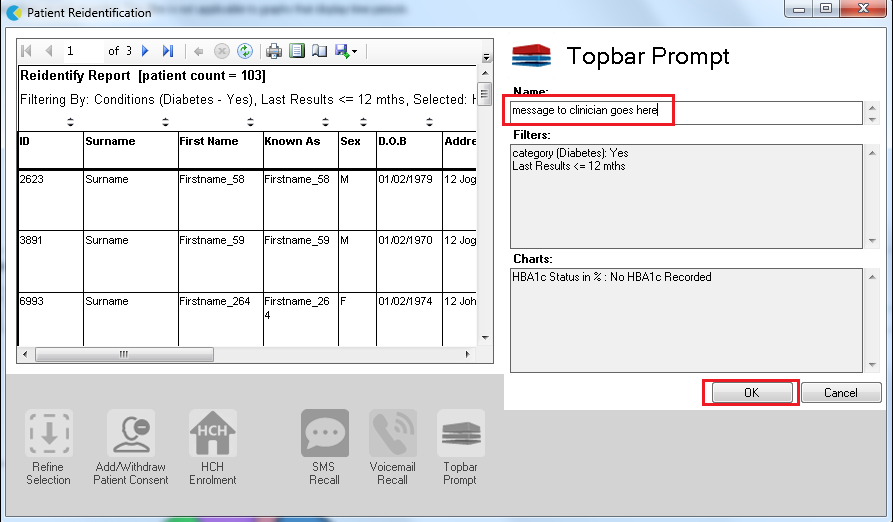Recipe Name: | Find patients with high cholesterol eligible for My Health For Life |
Rationale: | My health for life will help people at high risk of developing chronic conditions such as heart disease, stroke and type 2 diabetes make healthy lifestyle changes. The steps in this recipe show how to identify patients the eligibility criteria. Further information and resources are available here: https://www.myhealthforlife.com.au/ |
Target: | To identify all patients with no current diagnosis of diabetes, CVD or chronic kidney disease with high cholesterol taking lipid modifying medication who are eligible to be referred to the ‘My Health For Life’ program. |
CAT Starting Point: |
|
We provide other recipes showing how to find patients based on a single eligibility criteria on our My Health For Life recipe page here: My Health For Life Recipes
CAT Start screen
RECIPE Steps Filters:
- In the Start Age box type to only show patients older than 18
- OPTIONAL: In the "General" filter tab click on 'Active (3x in 2yrs)' - this will only show those patients with at least 3 visits in the last 2 years
- Click on "Conditions" tab under Diabetes select “No”
- Select "No" for Heart Failure
- Select “No” for all conditions listed under the CVD group
- Select “No” for “Chronic Renal Failure”
- Click on the 'Date Range (Results) filter to only show results that have been recorded in a specified date range, in this case in the last 24 months. This will move all patients with results older than 24 months to the 'not recorded' part of the reports and avoids listing patients with old results.
To find patients with high cholesterol who are currently taking cholesterol lowering medication, we need to add another filter. Click on the "Medications/Medications - Heart" tab and select "Yes" under the "Lipid Modifying" heading:
This will only show patients who are currently taking Statins or other lipid modifying medications, for details check the mapping guides for your clinical system (example MD3 medication mapping: Medications Data Category Mappings MD3)
We have now created a filter to find patients older than 18, with no diagnosis of diabetes, CVD or chronic renal disease currently taking lipid modifying medications. To apply the filters, click “Recalculate”
High Cholesterol
- Click on the "Pathology/Lipids/Cholesterol" tab and select the parts of the graph higher than 5.5:
Click on 'Export' to see the list of all patients with the cholesterol levels you have selected. This will show you the “Patient Re-identification report” which can be exported to MS Excel for further use.
Create a prompt to display in Topbar Remember you need to be in the CAT4 Daily View to be able to create prompts. Other pre-requisites are: To start click on the 'Daily View' icon on the top of your CAT4 screen: Once you have applied the filter(s) and displayed the patients of interest as described above, you can create a prompt that will be shown to all clinicians using Topbar if a patient meeting the prompt criteria is opened in their clinical system. The full guide is available at CAT PLUS PROMPTS and a short guide on how to create prompts in CAT4 can be found at Creating a Prompt in CAT4 To start you have to use the drop-down menu at the bottom of the patient details report and select "Prompt at Consult - Topbar" then click on "Go" to give the new prompt a name. The name you enter is the prompt text displayed in Topbar, so choose a simple but clear name that tells the clinician seeing the prompt what should be done.


